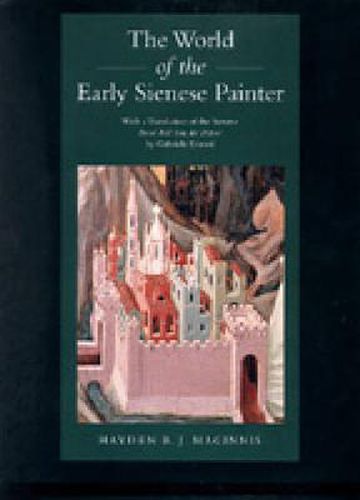Readings Newsletter
Become a Readings Member to make your shopping experience even easier.
Sign in or sign up for free!
You’re not far away from qualifying for FREE standard shipping within Australia
You’ve qualified for FREE standard shipping within Australia
The cart is loading…






Siena of the 13th and 14th centuries was one of the great cities of Europe, and its artists - Duccio, Simone Martini, and Ambrogio and Pietro Lorenzetti - were among those who reshaped the nature and place of painting first in Italy, then across Europe. Drawing on the extraordinary riches of the Sienese archives, on early unpublished secondary sources, and on the recent work of historians, Hayden Maginnis situates early Sienese painters within their society and their city and provides the first comprehensive account of the economic, social, religious and intellectual world of Siena’s artists. Where did painters live? How much were they paid? What was their social status? Were painters aware of the novel importance of 13th-century optics? Were the famous Sienese painters isolated figures, surrounded by a few secondary figures, or were they part of a larger community? These and a host of related questions structure Maginnis’ book, which demonstrates how firmly painters’ lives were embedded in the values and customs of their society and how important the particular character of their society was for the patronage artists received.
$9.00 standard shipping within Australia
FREE standard shipping within Australia for orders over $100.00
Express & International shipping calculated at checkout
Siena of the 13th and 14th centuries was one of the great cities of Europe, and its artists - Duccio, Simone Martini, and Ambrogio and Pietro Lorenzetti - were among those who reshaped the nature and place of painting first in Italy, then across Europe. Drawing on the extraordinary riches of the Sienese archives, on early unpublished secondary sources, and on the recent work of historians, Hayden Maginnis situates early Sienese painters within their society and their city and provides the first comprehensive account of the economic, social, religious and intellectual world of Siena’s artists. Where did painters live? How much were they paid? What was their social status? Were painters aware of the novel importance of 13th-century optics? Were the famous Sienese painters isolated figures, surrounded by a few secondary figures, or were they part of a larger community? These and a host of related questions structure Maginnis’ book, which demonstrates how firmly painters’ lives were embedded in the values and customs of their society and how important the particular character of their society was for the patronage artists received.